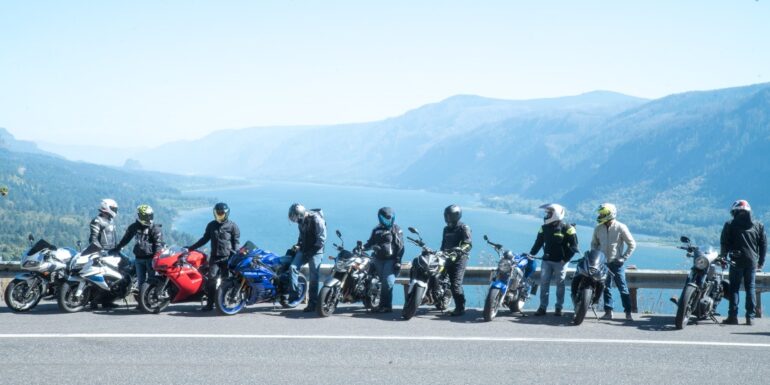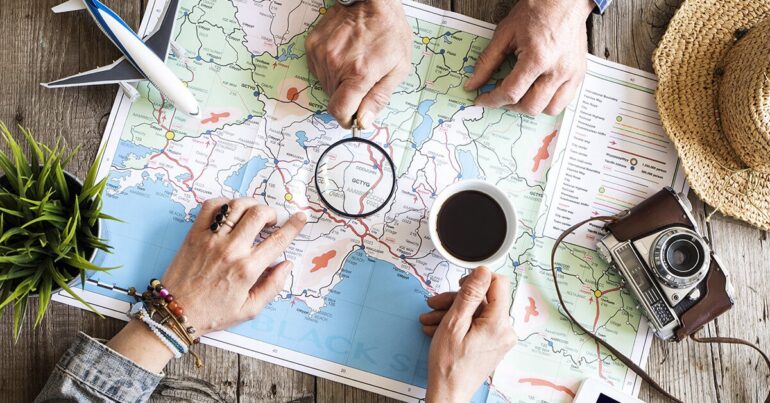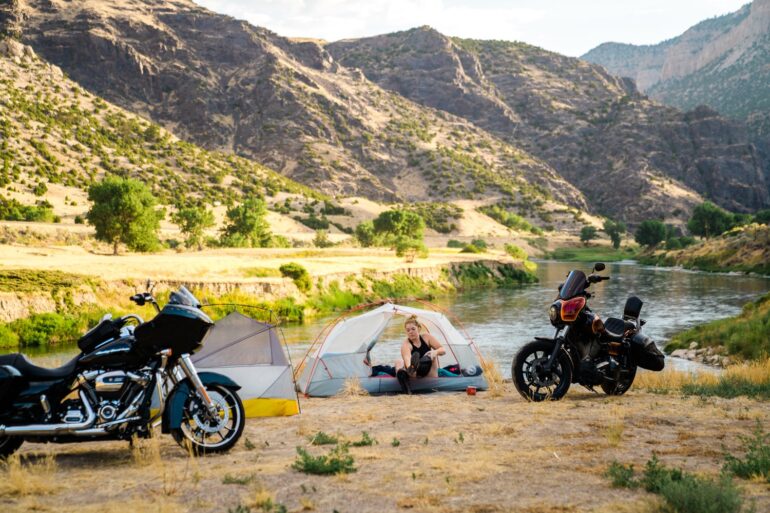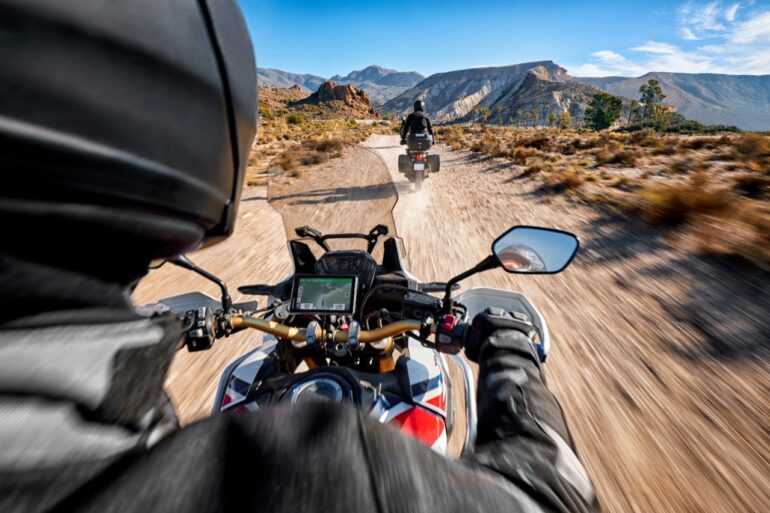Traveling on a motorcycle can be an incredibly exhilarating experience, but it can also be dangerous. If you’re planning a motorcycle trip, make sure to follow these safety tips to ensure a safe and enjoyable experience.
Choosing the right motorcycle

Motorcycle travel can be a great way to see a new area while enjoying the freedom and exhilaration of riding. However, it can also be dangerous if you don’t know what you are doing.
When deciding which motorcycle to buy, there are a few things to consider. First, what type of motorcycle will you be using? There are three main types of motorcycles: dirt bikes, sport bikes, and cruisers. Each has its own advantages and disadvantages, so it is important to choose the right one for your needs.
Dirt bikes are great for inexpensive short trips that aren’t too demanding on the engine. They are good for riding on unpaved roads and are generally easy to ride. They don’t have a lot of power, so they aren’t good for long rides or high-speed chases.
Sport bikes, on the other hand, are suitable for that kind of ride. They have more power than dirt bikes and are easier to ride at high speeds, but they aren’t as stable at low speeds. Sport bikes are also more expensive than dirt bikes, so if you only plan on using your motorcycle for short trips, a dirt bike may be a better choice.
Cruisers are the most versatile type of motorcycle. They are good for long rides, high-speed chases, and transporting passengers. They have a lot of power and are easy to ride, but they aren’t as stable at low speeds as sport bikes or dirt bikes. Cruisers also tend to be the most expensive models. If you plan on using your motorcycle for all types of activities, a sport bike or dirt bike will be a better option.
Planning your trip

Once you’ve decided on the type of motorcycle and the terrain you’ll be traveling through, it’s time to figure out your budget. Start by calculating how many miles you expect to travel each day. This will give you an idea of how much money you’ll need to cover fuel, repairs, and other expenses. After completing that task, there are some smart moves that you can make:
- Research the route ahead of time. Make sure to know the best highways and routes to avoid traffic jams and narrow roads. Know the landmarks and attractions you’ll be passing by so you don’t get lost.
- Choose the right motorcycle and equipment. Make sure to get a bike that’s comfortable for you, has the right size and weight restrictions, and is in good condition. it also must have the right gear. Click here to see what kind of windscreens are there and decide which one is the best for your model to protect you from strong winds. Be aware of wind speeds and weather conditions when selecting your motorcycle; a bad weather day can ruin your trip altogether.
- Pack appropriately for the weather conditions. Be sure to bring rain gear, sunglasses, sunscreen, layers of clothing, snacks, water bottles, and a first-aid kit in case of accidents or injuries. You may take courses for cpr and first aid so you’ll be equipped with the necessary skills to save lives during emergencies.
- Get a motorcycle safety course. This will help you understand the basics of motorcycle riding and protect yourself in case of an accident.
Camping while on your motorcycle trip
Motorcycle trips can be a great way to explore new areas and meet interesting people. But there are some things that you need to keep in mind if you want to make your trip as safe and pleasurable as possible. Here are three tips for camping while on your motorcycle:

- Make sure that you have the proper gear. You’ll need a tent, sleeping bag, pads, and a stove. Make sure that everything is well-prepared before you leave, just in case something goes wrong.
- Plan your route properly. Figure out where you’re going and map it out so that you don’t get lost. If you’re riding through unfamiliar territory, make sure to research the area before you go so that you know what to watch out for.
- Be aware of your surroundings at all times. If something looks suspicious, don’t take any chances – stop and check it out before proceeding any further. And always be cautious when riding at night – even in small towns or villages.
Health and safety during your trip
Motorcycles are great for travel, but they come with inherent risks. You have to make sure the safety is on the highest level.
- Make a list of the things you need and want to take with you on the trip. This includes not just your vehicle, but also any gear you’ll need for camping or other activities on the road.
- Get familiar with the equipment on your bike. Familiarize yourself with the controls, brakes, and tires in case something goes wrong. Practice taking care of your machine in an empty parking lot before your big trip.
- Wear a helmet and protective gear when riding a motorcycle. Even small mistakes can lead to serious injuries, so it’s important to protect yourself no matter how safe you feel overall.
- Stay alert while on the road. Watch for unexpected traffic or obstacles, and be ready to react quickly if something happens. Don’t hesitate to pull over if you feel unsafe or if your motorcycle is in trouble.
- Ride defensively. Be alert for others on the road, especially drivers who might not be playing by the rules. Give them plenty of space and avoid making sudden moves.
Conclusion

No matter how great your motorcycle trip plan is, there’s always a chance that something could go wrong. If you want to make sure your journey is as safe and pleasurable as possible, read on for some tips on how to prep for the ride and stay safe while riding. By following these guidelines, you can reduce the chances of any unpleasant surprises along the way.
